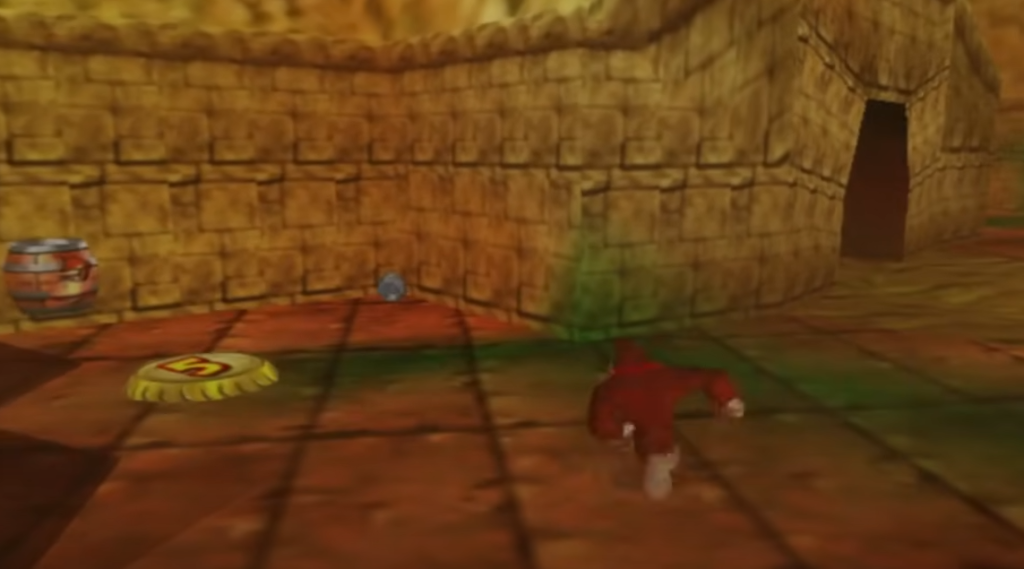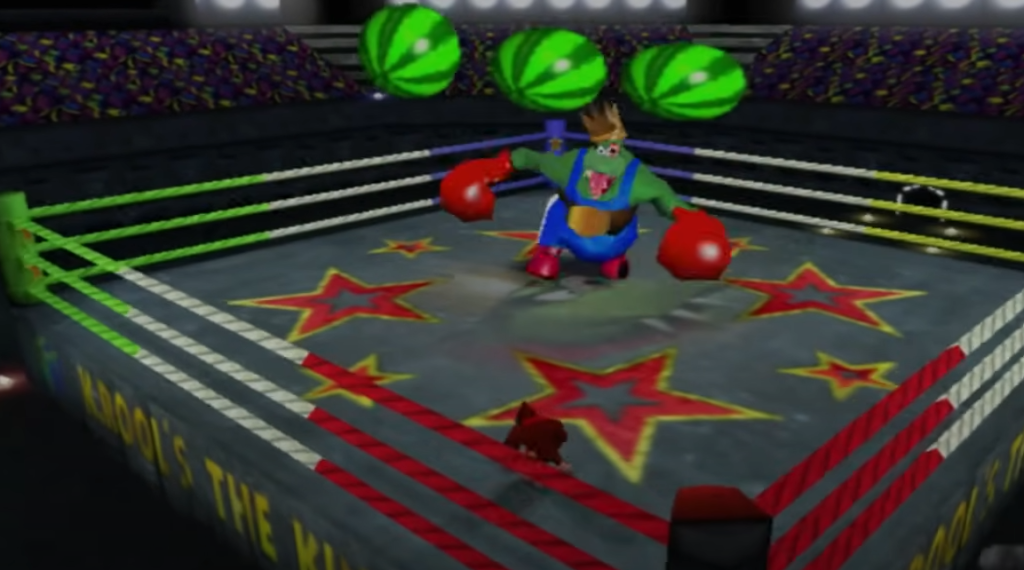Donkey Kong 64, released in 1999 for the Nintendo 64, is a sprawling 3D platformer and Rare’s attempt to bring the beloved ape into the third dimension. While it delivers on scale and ambition, the game’s reliance on extensive collecting can be divisive, making it a mixed but memorable experience for many players.
Gameplay
At its core, Donkey Kong 64 is an adventure-platformer where players explore massive levels, collect items, and complete puzzles to progress. You control not just Donkey Kong but four additional Kongs—Diddy, Lanky, Tiny, and Chunky—each with unique abilities, weapons, and musical instruments. This multi-character system adds variety but also contributes to the game’s primary drawback: excessive backtracking.
The game revolves around collecting Golden Bananas, Blueprints, and a myriad of color-coded items tied to specific Kongs. While the sheer volume of collectibles creates a sense of depth, it often feels like padding, leading to repetition.
Combat and platforming are serviceable but less polished than Rare’s other games, like Banjo-Kazooie. The controls can feel imprecise, especially in segments requiring tight timing or aiming with the first-person shooter-like mechanics.

Graphics and Sound
Rare’s talent for pushing the Nintendo 64’s hardware is on full display. The game features vibrant, detailed environments filled with character and charm. Each level, from the jungle-themed Jungle Japes to the spooky Creepy Castle, is visually distinct and brimming with personality.
Grant Kirkhope’s soundtrack is another standout. The music ranges from catchy and lighthearted to atmospheric and intense, perfectly complementing the game’s environments. Tracks like the DK Rap have achieved cult status, though the song’s cheesiness divides opinions.
Level Design
The levels are massive, almost to a fault. While their size allows for exploration and hidden secrets, they can feel overwhelming. The constant need to swap Kongs at designated barrels to interact with color-coded items disrupts the flow and turns exploration into a chore.
That said, the game shines in its set pieces and boss battles. Memorable encounters, like the showdown with King K. Rool, and clever puzzles keep the experience engaging despite its flaws.

Legacy
Donkey Kong 64 was ambitious for its time, but its design hasn’t aged as gracefully as its peers. The overemphasis on collecting and the lack of modern quality-of-life features, such as fast travel or streamlined progression, make it a polarizing experience today.
Still, it’s an important piece of gaming history, showcasing Rare’s creativity and the potential of 3D platformers during the N64 era. Fans of collect-a-thons or Rare’s signature style will find plenty to love, though others may struggle with its pacing.

Verdict
Donkey Kong 64 is a game of extremes: it’s incredibly ambitious, packed with content, and visually impressive, but its relentless focus on collecting and backtracking can be frustrating. For those with patience and a love for Rare’s platforming formula, it’s a fun, nostalgic journey. For others, it may feel like a relic of a bygone era.
Score: 7/10
